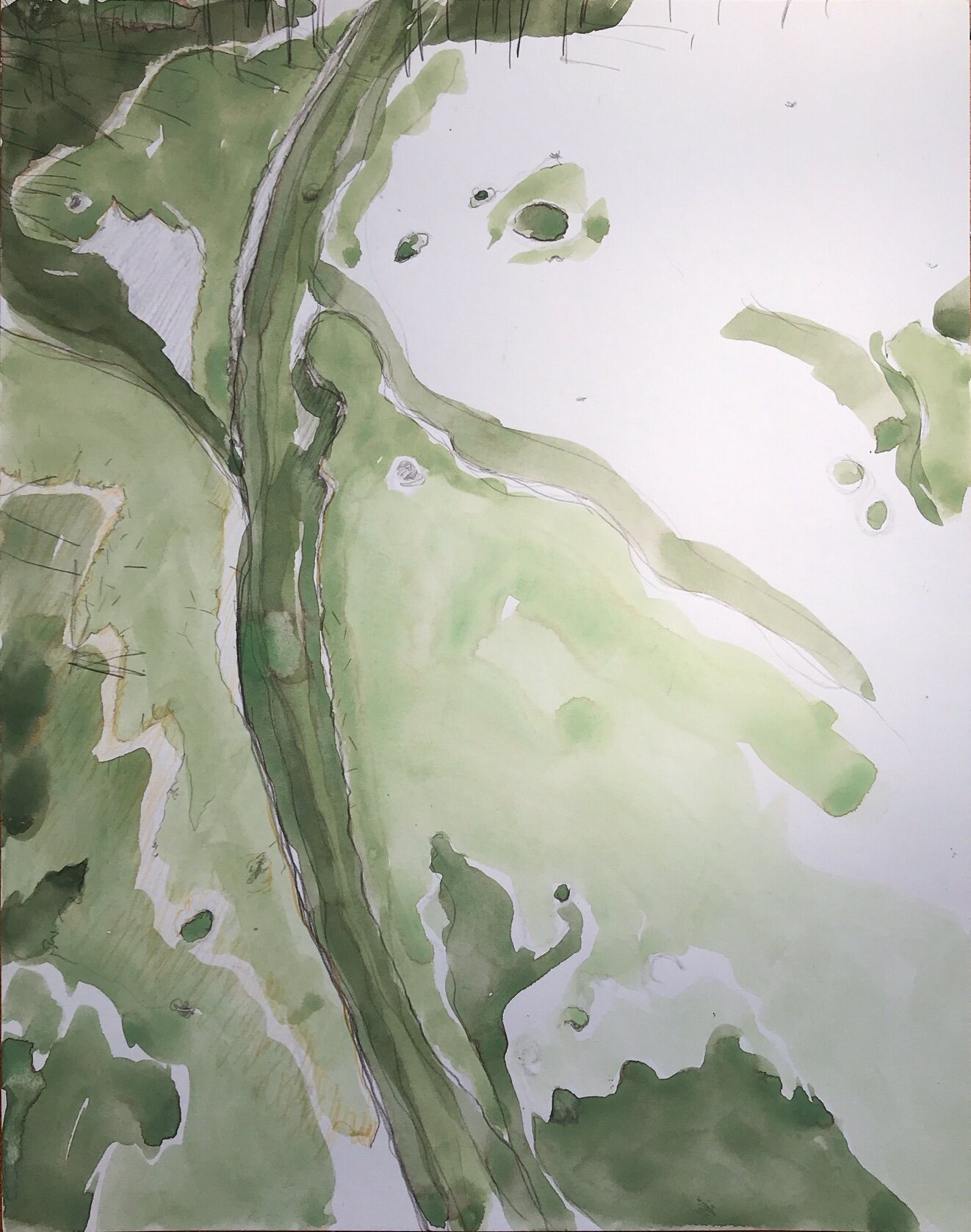Inspiration or elegy?
Cedar Key tidal rivulet 2014
Inspiration of elegy?
This morning’s Washington Post featured a story, titled “Radical warming in Siberia leaves millions on unstable ground,“ that described how the unexpectedly fast melt of the Arctic tundra is leading to startling hot spots around the globe.[1] Another story, in the NY Times, titled “A Huge Iceberg Split From Antarctica. (They Just Grew Apart),” informed us that a historically large chunk of ice has broken away from the Antarctic ice sheet.[2] It seems that, in real time, we are witnessing irreversible changes to our planet’s geology, precipitating alarming changes to flora and fauna across the globe.
I immediately thought of the very smart work of my University of Virginia colleagues Matthew Jull and Leena Cho, who launched the Arctic Institute, now the Arctic Co-Lab, soon after their arrival at the A-School. I recall hiring them, in around 2012, and their fascination with the Arctic. At the time their work seemed to me thoughtful and focused, but somehow peripheral to larger environmental issues. I assumed their passion arose in part from their own personal geographies--Matthew grew up in Canada and Leena in South Korea, as I recall. Soon thereafter, though, they participated in a symposium we hosted, “After the Deluge: Reimagining Leonardo’s Legacy” where they laid out their case for the importance of the Arctic. It was stunning—I saw the globe through a whole new lens. Their work continues to inspire many, and their spatial focus brings a critical perspective to this global geo-enviro-political crisis.[3]
Simultaneously, in recent months I’ve noticed friends of mine, mostly fellow architects from around the world, posting pictures of natural environments—micro or macro—that they encounter daily. I think of Rafael Gavilannes’s Instagram post of the curl of a leaf as if an inhabitable space. In my mind I see Alex Kreiger’s images of fall in New Hampshire, or Doug Hecker, walking in the Appalachians, fascinated with moss. Today, Cooper Union will host a book signing for Diana Agrest, to celebrate the release of her beautiful new book, Architecture of Nature, Nature of Architecture.[4]
I, too, have been photographing, drawing, and painting landscapes and details of nature. When I began, in 2014, my goal was to recover my “hand” following years of an email-heavy daily practice. It was a form of healing, and of instruction. I sought to apply my long-dormant art and architecture training to the understanding of these endlessly complex, emergent, non-cartesian forms.
When I paint from nature, as I’ll do later today, I think of myself learning from my subjects. How does this living thing grow? How does it die and decay? What is the structure that holds it away from the pull of the earth? Why does this flow move in this direction, at this rate of speed? How quickly does it change color? Did it really just, uh, move?? My friend, artist Celeste Roberge, shared with me the work of science writer Philip Ball, whose trilogy, Nature’s Patterns. A tapestry in three parts: Flow, Shapes, Branches, has helped me understand what I see, and what I mime as I work.[5]
Dragging a paint brush, or a pencil, across paper, it seems as though I am caressing my subject. Am I thanking it, or am I imploring it to help me, to teach me?
I have begun to reflect on the apparently recent focus on nature, among friends more typically prone to focus on the constructed environment. I also wonder what other motives I might have for my obsessive interest in nature’s intelligence. I feel I am trying to absorb it, to internalize it, while I can. For me, and perhaps for others, I have this question:
Am I recording and sharing sources of inspiration, or am I contributing to a collective elegy?
[1] “Radical warming in Siberia leaves millions on unstable ground,” Anton Troianovski and Chris Mooney in the Washington Post, October 3, 2019. Seehttps://www.washingtonpost.com/graphics/2019/national/climate-environment/climate-change-siberia/
[2] “A Huge Iceberg Split From Antarctica. (They Just Grew Apart.),” by Kendra Pierre-Louis in the NY Times, October 1, 2019. See https://www.nytimes.com/2019/10/01/climate/antarctica-iceberg-d28.html?fallback=0&recId=1RkAV9UkXY28NRn5ZZNBt2emurI&locked=0&geoContinent=NA&geoRegion=FL&recAlloc=control&geoCountry=US&blockId=home-discovery-vi-prg&imp_id=327580095&action=click&module=Discovery&pgtype=Homepage
[3] See https://www.arch.virginia.edu/events/bridging-science-art-community-in-the-new-arctic
[4] Diana Agrest, Architecture of Nature Nature of Architecture, Applied Research and Design Publishing, 2019. https://www.appliedresearchanddesign.com/product/architecture-of-nature/
[5] Philip Ball, Nature’s Patterns. A tapestry in three parts: Flow, Shapes, Branches, Oxford University Press 2009. See https://www.amazon.com/Shapes-Natures-Patterns-Tapestry-Three/dp/019960486X
